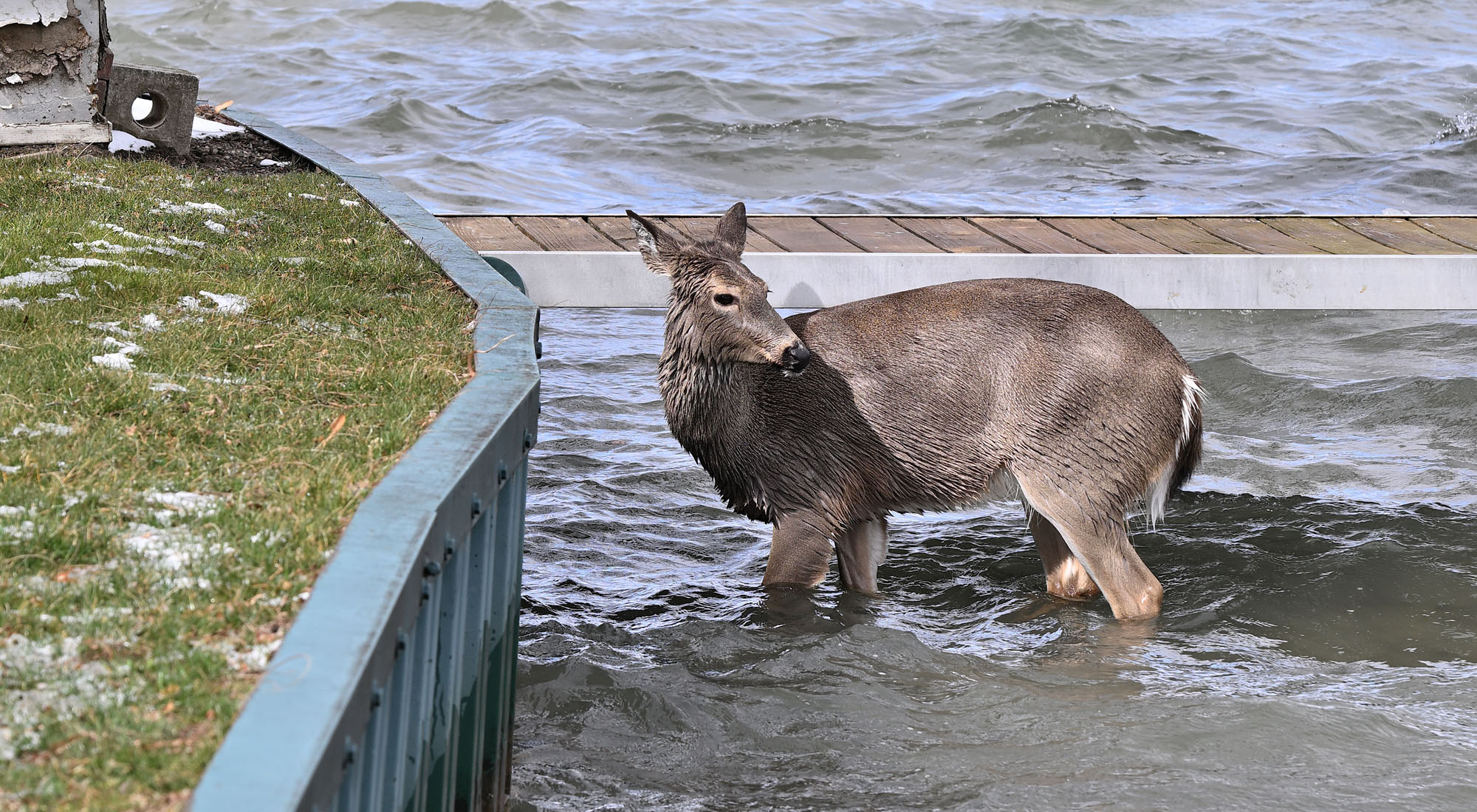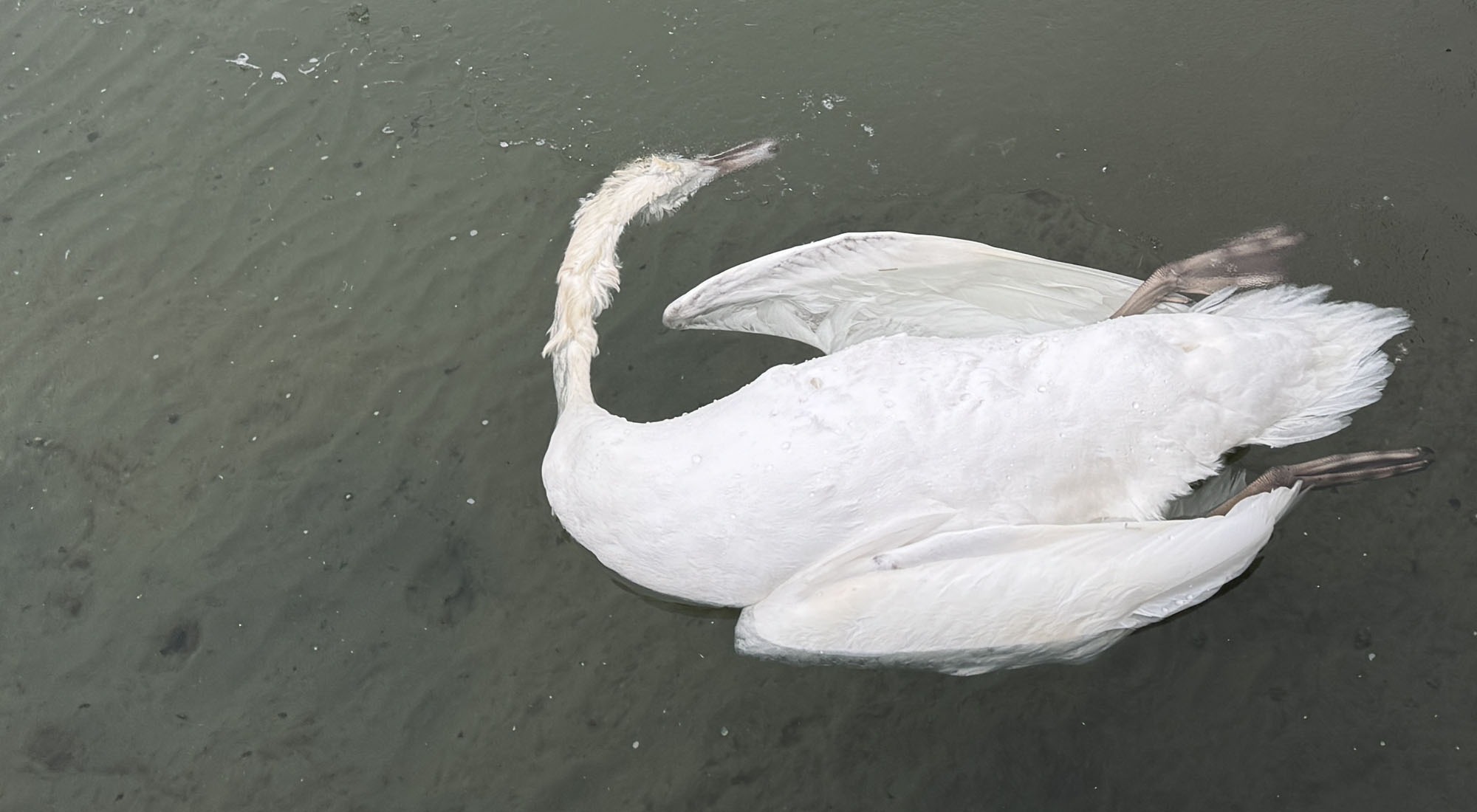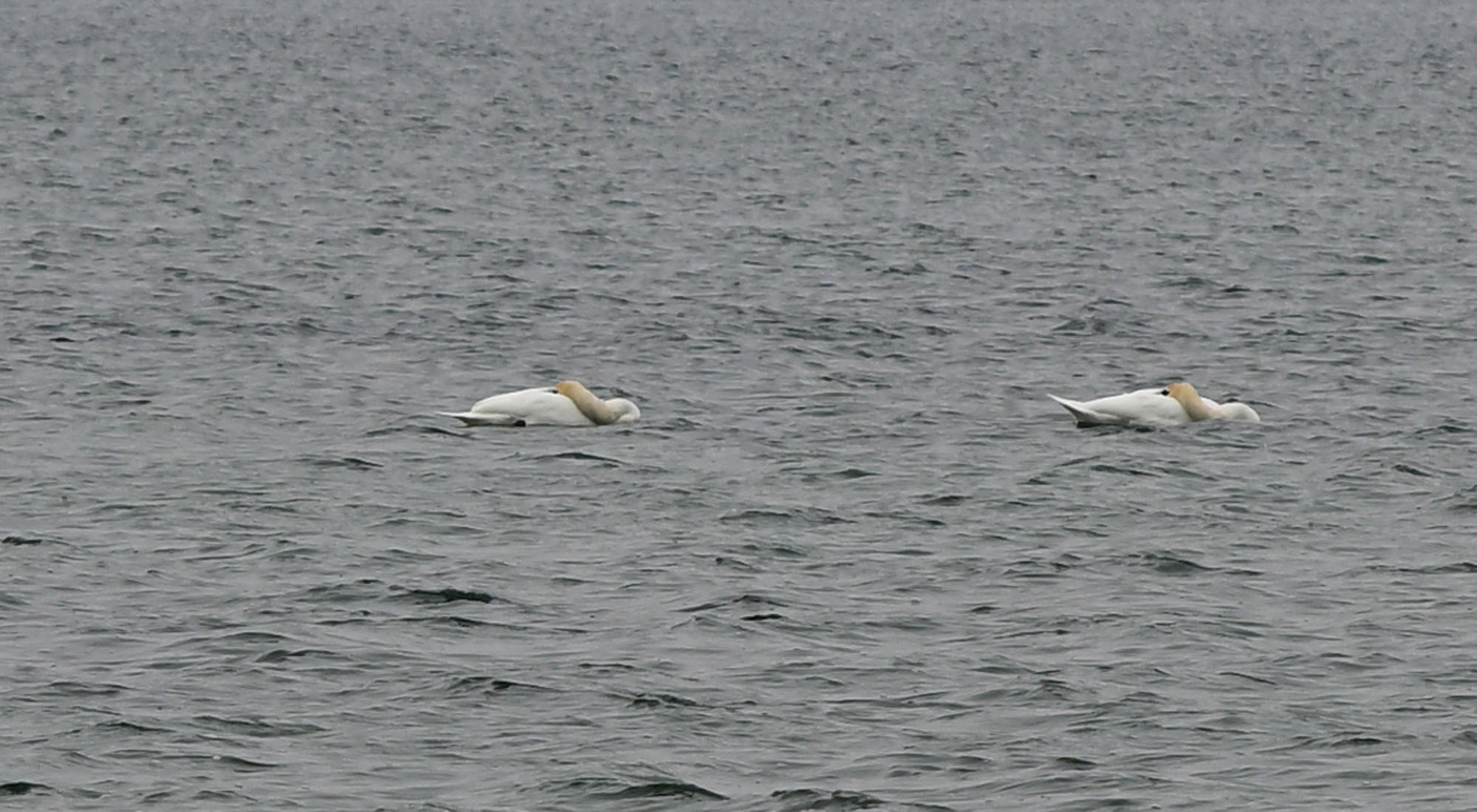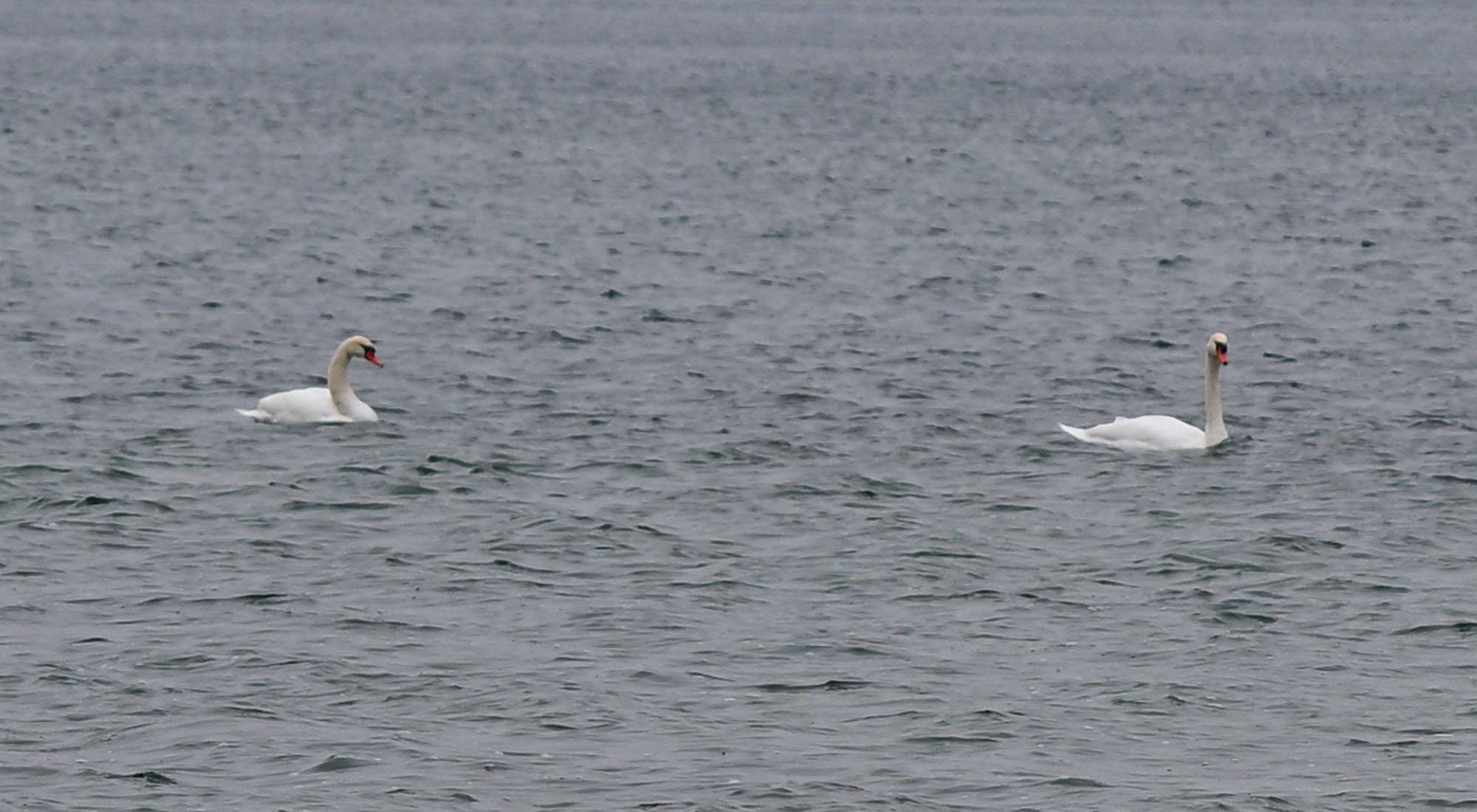Two wildlife incidents received widespread attention at Clark Lake – four dead swans and a deer that appeared dazed and confused. This website contacted the local DNR Waterloo wildlife office near Grass Lake.
First, a quick recap on what the deer was up to yesterday (Sun 3/11). Neighbors in the Lakeview West area spotted the deer wandering on the road, on decks, and in and out of the water. Here’s the video, captured by Andy Scott yesterday, as presented on this website.
At one point, the deer departed the Lakeview West area and swan to Mud Point. Your reporter found it there, standing by the dock. He approached it, came close, and took this photo.

Later, the deer swam in a northerly direction, and arrived on the North Shore.
How often do you see deer behave like this? Some observers thought the deer might be ill or injured.
Today this website interviewed the DNR’s Dennis Tison to get answers. After reviewing the video and photo on this website, he gave his take. He said deer are not normally as approachable as this one seemed to be, but behavior changes when people feed deer. They associate food with people, and don’t flee when they spot a person near them.
Was the deer ill? Dennis tended to believe this deer was not ill. In viewing the video, he observed that the deer had its ears up, a good sign. The deer was not exhibiting signs of ill health. It was not thrashing or running in circles. It was not laying on the ground, nor was its head bobbing. When a deer is ill, it sometimes appears to look right through you if you walk up to it. Dennis observed the deer looked healthy in other ways – the rib bones and hip bones were not showing.

While the deer’s actions seemed unusual to observers here, Dennis did not feel it was a a candidate for chronic wasting disease or some other malady.

On February 12, this website reported as many as four swans were found dead, floating in the lake or washed to shore. What would cause this? Dennis pointed to two possibilities. One was previously mentioned on this website – ingestion of flukes, a parasite. Another possibility is high path avian influenza. This affects birds of all kinds. “The emergence and spread of avian influenza viruses…is closely linked to the movement of migratory waterfowl travel along flyways analogous to highways in the sky for birds. The flyways that cross the United States from north to south are the Pacific, Central, Mississippi, and Atlantic. Michigan is within the Central and Mississippi flyways.” (from Michigan State University Veterinary Diagnostic Laboratory – click here for more).
“A necropsy would be necessary to determine the cause,” says Dennis. How would that be possible? The necropsy would have to be performed shortly after a death occurs. It’s possible that the DNR will pick up the carcass if it has washed to shore. But they aren’t equipped with boats. If the swan is farther out, a volunteer would be necessary to help fetch it.
With two employees, the DNR Waterloo Wildlife office is responsible for 4 1/2 counties and 12 game areas consisting of 20,000 acres. Enlisting their expertise might require working with them for a potential pick up. At the Waterloo office are Dennis Tison and Samantha Greenley. As there’s no customer service employee to take calls, leaving a voicemail message on this phone works best: (517) 522-4097. You may also want to contact this website at ClarkLakeSpirit@gmail.com.
Thanks to these Clark Lakers who helped on this story: Andy Scott, Laurie LaZebnik, B.J. Lyons, Columbia Township Police, Columbia Township Fire Chief Scott Cota.
Recently one observer counted seven swans at Clark Lake. Here are two of them on March 6th. Were they okay?

Here they are a few minutes later. Turns out they were napping.












Thank you for the information. Hate to see the loss of our swans though. Hopefully that deer is enjoying his adventure.